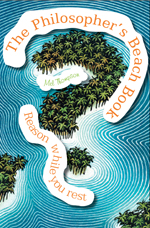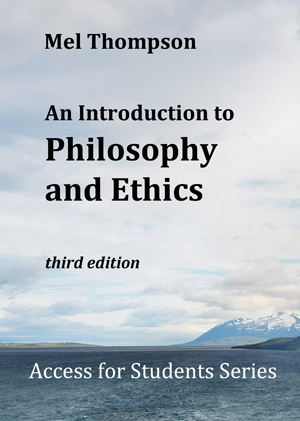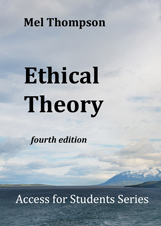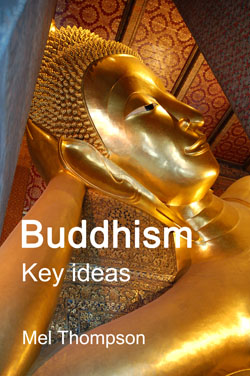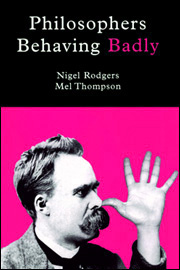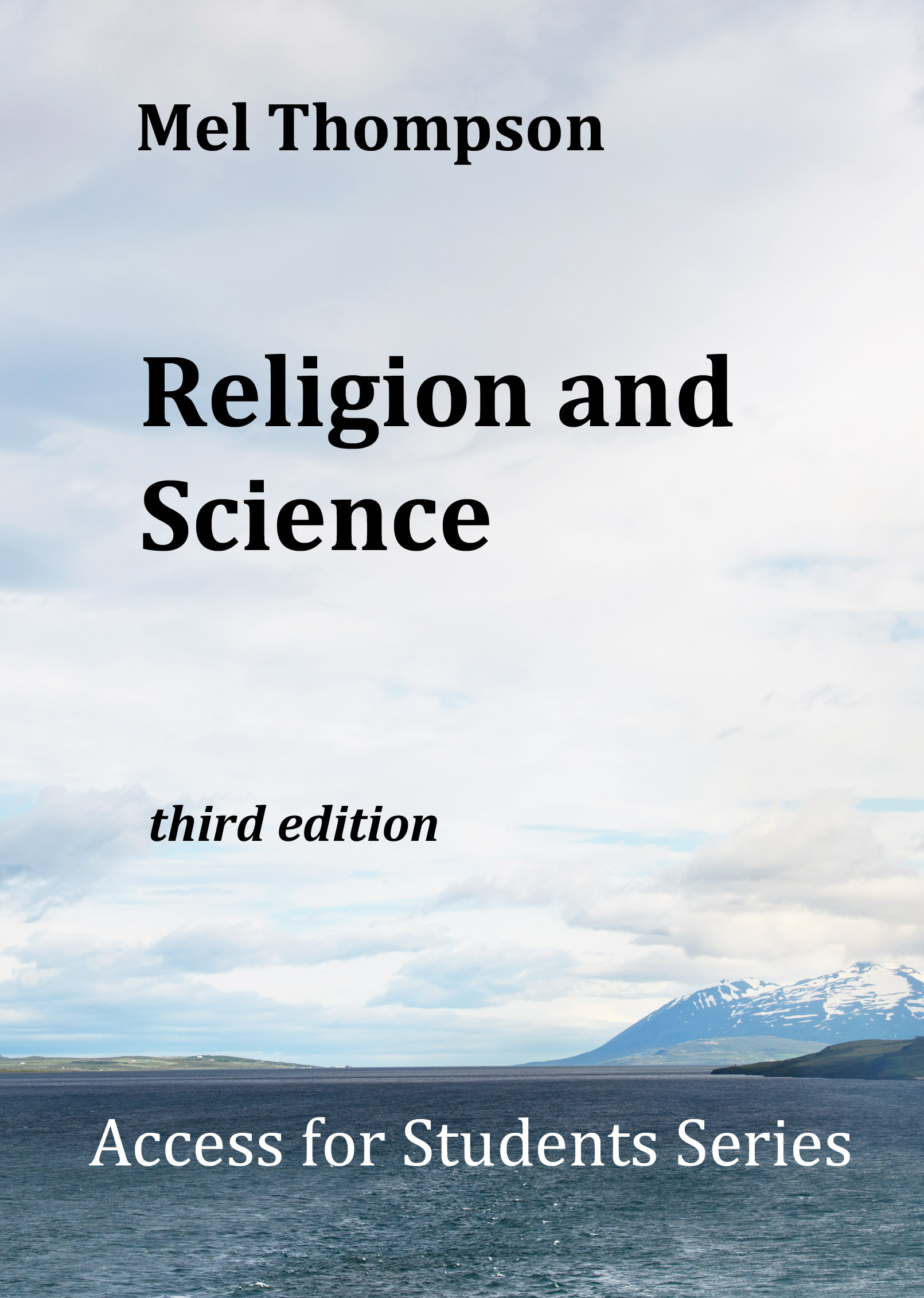Notes on Language / Religious Language
Contents
Language games and forms of life
Realism and anti-realism in religious language
Verification and falsification (applied to religious language)
Introductory notes on Wittgenstein and the Logical Positivists
In his early work, Ludwig Wittgenstein (1889-1951) suggested that philosophical problems would be solved if the language people used could be made more precise. In particular he was concerned to see the limits of language and how it was related to the world.
In the opening statement of Tractatus (1921), he identifies the world with the sum of true propositions: ‘The world is all that is the case’, but he also acknowledges that there are therefore certain things of which one cannot speak. One of these is the subject self (‘The subject does not belong to the world; rather it is a limit of the world.’) another is the ‘mystical’ sense of the world as a whole. Whatever cannot be shown to correspond to some observable reality, cannot meaningfully be spoken about in the form of factual propositions. That shows the limitations of language, not the limitations of reality. Thus Wittgenstein’s early approach to language presented it as a precise but narrowly defined tool for describing the phenomenal world.
Logical positivism
His ideas were taken up by the ‘Vienna Circle’, a group of philosophers who met in that city during the 1920s and 30s. They hoped to clarify language by testing out the way in which statements could be verified, either by logic or evidence. Their approach is generally known as Logical Positivism Broadly, it claims that:
- Analytic propositions tell us nothing about the world. They are true by definition, and therefore tautologies. They include the statements of logic and mathematics.
- Synthetic propositions are those that depend for their truth upon evidence – they describe what is perceived to bet he case, and are confirmed by the evidence of those perceptions. Therefore there can be no necessary synthetic propositions, since they will always be vulnerable to changes in evidence.
- Metaphysics and theology are literally ‘meaningless’ - since they are neither matters of logic (and therefore true by definition - a priori) nor provable by empirical evidence.
Maurice Schlick, argued that the meaning of a statement is its method of verification. This became known as the ‘verification principle’. In other words, to say ‘The cat is behind the door’ means ‘If you open the door you will see the cat.’ That approach works perfectly well for most commonsense statements of fact and for scientific claims.
Logical Positivism was promoted by the British philosopher A J Ayer (1910-1989). In Language, Truth and Logic (1936), he asks ‘What can philosophy do?’ His answer is that it certainly cannot tell us the nature of reality as such; for that, we have to rely upon the evidence of our senses. Philosophy cannot actually give new information about anything, but its task is analysis and clarification.
Ayer set out two forms of the verification principle. They are:
- (a strong form) ‘a proposition is said to be verifiable in the strong sense if the term, if and only if its truth could be conclusively established in experience.’
- (a weaker form) ‘if it is possible for experience to render it probable’ or ‘some possible sense experience would be relevant to the determination of its truth or falsehood.’
Other statements can have meaning, but Ayer is concerned with statements that have ‘factual meaning’ - in other words, if experience is not relevant to the truth or falsity of a statement, then that statement does not have factual meaning.
Limitations of the view taken by Logical Positivism
The Logical Positivists had hoped to find a way of making language simple, transparent and ‘scientific’. They could only do that my restricting its valid use. But language cannot be simple or transparent, because:
- People (hopefully) think before they speak
- They may also perceive before they think
Therefore
What they say reflects the nature of thought and of perception
- Language is therefore only as simple and straightforward as the thought and perception that produces it
- Add intuition, emotion, existential angst and the general confusions of human life, and the resulting language is very complex indeed.
- It may perform many different functions
- We may not even be aware of the implications of what we are saying, which is to return to Plato who, in his dialogues, portrays Socrates as a man who is constantly asking people what they mean, and thereby exposing their confusions and opening up the way to greater clarity.
- Without language we cannot have metaphysics or epistemology: indeed, we cannot have philosophy, civilisation, culture or other distinctively human features of life – but these things are not simply to be equated with physical objects that can be known to the senses and pointed to by corresponding words. (Thus, for example, we know what ‘culture’ means, and can discuss it, but we cannot point to some object and say ‘that is culture and nothing else.’ We have to learn what we mean by ‘culture’; you cannot say ‘that is culture’ in the same sense that you would say ‘that is a cat’.)
So something more is needed, and our appreciation of language needs to expand beyond its simple, pointing function. That’s where the second phase of Wittgenstein’s work comes in.
Note:
A popular criticism of the Verification Principle is that it cannot be verified, and therefore that, on its own terms, it is meaningless. This apparently clever little criticism is not particularly significant, since the verification principle was concerned with statements that are factually significant, whereas the Verification Principle is not a factual statement at all, but only a policy for interpreting such statements.
‘Language games’ and ‘forms of life’
By the 1930’s Wittgenstein (who, in the earlier phase of his work had espoused this radically reductionist approach to factual language, whilst acknowledging its limitations) broadened his view, and accepted that language could take on different functions, of which straight description of phenomena was only one. This later approach is found in his Philosophical Investigations, published after his death, and also in his various notebooks.
Wittgenstein recognised that expressing values and emotions, giving orders and making requests, were all valid uses of language. His key idea developed in the period of his philosophy: that the meaning of language is found in its use.
In exploring how language is used, he refers to ‘language games’ and also to ‘forms of life:’
Key to his new view of language was his advice: ‘Don’t think; look!’ If you want to understand something, it is not enough to understand the meaning of words and the way they logically fit together. Rather, it is important to look at how those words are used. Look at what that claim means for people. Meaning is given by use.
Language is a ‘form of life.’ For example, a builder may call out ‘beam’ of ‘more bricks’ or the like. Someone understands what is wanted when he or she hears that word. That language is a kind of activity. You shout ‘bricks’ because you want some, not to give a description. The same thing happens when small children learn language – it is an activity, they learn what to do with words.
In Philosophical Investigations Wittgenstein says:
‘Philosophy may in no way interfere with the actual use of language, it can in the end only describe it.’
‘Philosophy leaves everything as it is.’
Games operate via rules and structures; without these they make no sense. Men kicking a ball around on a piece of grass = football. The rules of football are not found in nature; they are an artificial construction. With agreement, the rules could be changed. The scoring of a goal has no absolute or objective meaning. But football is the focus of real emotions, rivalries, loyalties. Football may be ‘unreal,’ in the sense of being an arbitrary construction, but its impact on people’s lives is real enough. If I do not know the rules of your game, I do not know whether what you say makes sense. Utterly different games are all ‘games’ because they are all understood and played according to a set of rules.
So, a language game could be…
- Telling a story or joke
- Giving an order
- Making a promise
- Daubing a wall with a political slogan
All these are ‘games’ in that they make sense only in their context. They are also ‘forms of life’; they are activities. The words only make sense when you understand the nature and purpose of that activity. That is the essence of Wittgenstein’s ‘form of life’ and ‘language game’ theory. The rules for the use of language are neither right nor wrong: they are merely useful for each particular application. You can’t say that the joke is ‘wrong’ – it’s simply a joke, and it either works or it doesn’t.
Just as there are many different activities that are all called ‘games’, although they have little physically in common with one another, so there were all different 'language games'. In other words, language was no longer just ‘picturing’ reality, but found its meaning in its many different uses to which it was put.
To understand the meaning of a statement, you have to see it is its context and appreciate what it is intended to achieve.
The Religious Language Game
We have seen that Wittgenstein was hugely influential – twice. Firstly, in Tractatus, he encouraged a precision in language that led some of his followers to take a position termed Logical Positivism, and then later, in Philosophical Investigations, his whole view of how we use and understand language changed. Unlike Logical Positivism, which had a very narrowness view of meaning, we have seen that this later work spoke of ‘language games’ and language as a ‘form of life’.
To appreciate the significance of this for religious language, we need to refer back to his earlier philosophy:
In Tractatus Logico-Philosophicus (1921), he argued that the function of language was to picture the world. Therefore every statement needed to correspond to some information about the world itself. This was the view taken up by the Logical Positivists (and made popular by A J Ayer in Language, Truth and Logic). Their ‘Verification Principle’ argued that the meaning of a statement was its method of verification. A statement is thus only meaningful if it could (at least in theory) be proved true of false by evidence.
This created particular problems for religious language and for ethics – because their statements could not simply be reduced to information about experienced facts. If a religious person says: ‘I have just witnessed a miracle.’ or ‘I believe in God’ the truth is not simply established by looking at evidence. Quite clearly, since God is not a physical being, we cannot know whether the statement that he exists can be true or false by reference to anything we experience. So literal, factual language will not give us what we need for statements about value, morality or religion; these things cannot be factual in the way that science is factual.
Some reactions to this:
Factual statements may be verified (if they correspond to evidence) or falsified (if they contradict it), but such verification and falsification can only be applied to literal description. This is totally different from myth, or literature, or poetry. A creation myth, for example, will try to show the value and purpose in creation, and the place that humankind has within it. It is NOT science, and should not follow scientific criteria of truth. It explores deeper levels of human experience.
Cognitive language conveys factual information. Non-cognitive language may convey emotion, give an order, express hopes and fears - but it does not depend on external facts. Much religious language is non-cognitive.
The key question here:
How much religious language is cognitive and how much non-cognitive?
The philosopher Hume argued that there were only two kinds of statement: those that gave matters of fact, and those that simply explained logic and meanings. In the theory of knowledge, philosophers who believe that all our knowledge starts with experience are called empiricists. Hume was an empiricist, and he therefore regarded the information we gain through the senses as the basic test of truth for all cognitive language. But is language just about conveying what we have experienced, or does it have other functions, especially in connection with religion?
Religious language is concerned with myths and symbols. Advertisers are always looking for the way a product can become a symbol – it says something about the person who buys it, wears it, or uses it. You look at the TV advert and (unconsciously) ask yourself – ‘Is this the sort of person I want to be?’ You are being fed a ‘myth’ – not in the sense that it is unreal, but in the sense of a story that is composed of symbols, that suggest a deeper meaning. Non-literal meanings are so much more interesting than literal ones!
Logical Positivism had rejected all language that could not be verified with respect to experience, and therefore regarded morality and religion as factually meaningless. But that is to misunderstand the non factual nature of religious language.
As a ‘language game’ religious language is understood in terms of the part that it plays in people’s lives, rather than referring to an external reality. The meaning of religious terms is shown by the way in which they are used.
The validity of religious language is therefore given by the community that uses it; you cannot separate beliefs from the religious community that espouses them.
Therefore religious language may not be literally true, but it is justified by the way it helps us to understand ourselves and relate to others who use the same game. It expresses attitudes and personal intuitions about the world and the place of humankind within it. In other words, it is what we can term ‘anti-realist.’
So that leaves religion with a serious question:
IS ANTI-REALISM A SATISFACTORY ANSWER TO THE VERIFICATIONIST AND FALSIFICATAIONIST CHALLENGES TO RELIGIOUS LANGUAGE?
How can you justify what you say about ‘God’? Loving, wise and so on? Do these have a meaning in any literal sense when applied to God? This is made even more difficult by words such as ‘omnipotent’, ‘omniscient’ or ‘omnipresent’ - they mean something in the context of belief in God, but they are not the kind of terms that can be verified in any literal sense. How can you know if there is a God, or whether could be ‘omnipotent’?
Issues here that may already be familiar to you – for example Flew's well-known parable of the Gardener. In 1955, Anthony Flew presented a story (originally told by John Wisdom) to illustrate the way in which people hold onto their beliefs in spite of evidence to the contrary. Two explorers, coming across a clearing in the jungle in which there are a mixture of flowers and weeds, debate whether there is a gardener who comes to tend it. Because of the ambiguity of the evidence, they set up various tests to identify the gardener, but none prove positive. The ‘believer’ concludes that there is an invisible, intangible gardener who is insensitive to electric shocks. The other claims that such a gardener is no different from no gardener at all! In the same way, Flew claims that the claim that there is a god dies the ‘death of a thousand qualifications’. In other words, when all the things that God is not are stacked up, there seems nothing left to be God.
Verification and Falsification
If you look find evidence that backs up a claim, it verifies it. The more evidence you have, the more likely it is that the claim is true. In formulating a hypothesis, science gathers information and looks for the most likely explanation that takes all the available evidence into account. However, in science (following the work of Karl Popper), it is important to recognize the part played by falsification. A single piece of evidence, contradicting a theory, might logically seem to be enough to challenge its truth. However, in practice, it’s never that simple, because the evidence might be at fault. In general, rather than abandon a theory on the basis of a single adverse bit of evidence, a theory is generally retained until a better one comes along, one that can explain all the positive evidence and also that bit of negative evidence.
The question, in religious terms, might be framed like this: “ You may give evidence to back up belief in God, but what would it take to persuade you that God did not exist? In other words, what would falsify your belief?” If nothing would falsify it, then your belief is not dependent upon evidence and is therefore non-cognitive. If your belief concerns something that exists apart from your believing it (in other words, its about the world ‘out there’ not within your own mind) it may be said to be realist. If religious beliefs are not about the world ‘out there’ but are expressions of personal wishes or preferences or values, they may be described as anti-realist, or non-realist. Verification and falsification help to decide whether a belief is realist or not.
So we have two related sets of questions:
- Does God exist? (If not, religious language may be misleading anyway)
- Can religious language be justified?
BUT not all language causes such problems. Some kinds of language are very straightforward; for example, descriptive language. I might say: “monks wear black robes.” It is absolutely clear what I mean. The statement needs to be qualified, for example by saying “Some…” (because there are monks who wear grey or white robes), but otherwise it is clear to everyone what is meant, and everyone knows in principle how to check if it is correct - go and find as many monks as possible and check what they're wearing.
But a religious person might say: “I have just seen a miracle.” or “I believe in God.” The truth of this is not at all clear. First of all, the person would need to say what he or she meant by ‘miracle.’ If the definition implied that the event could not be accounted for in the ordinary way, then it would be open to an impartial observer of scientist to check the evidence on which it is based. Two people could witness the same thing; one might call it a miracle, the other might not.
As we saw in the earlier section of this set of notes, the issue of religious language was highlighted by the work of the Logical Positivists. They insisted that the meaning of a statement was given by its method of verification. They argued that, if you can't give evidence (or say what evidence could possibly be provided) to show whether a statement is true or false, then that statement is meaningless. On that basis, much religious language is meaningless.
But there are other significant features of religious language – and, indeed, of language in general – that we need to take into account:
‘Experiencing as’
John Hick, following the work of Wittgenstein, points out that all experience involves interpretation. We do not just experience things, but experience them ‘as’ something. Whether the battle ends in victory or defeat depends on which side you are on. From exactly the same evidence, one interprets what has happened ‘as’ victory, the other ‘as’ defeat. But this is not limited to descriptions of value; all descriptions are interpretations - indeed, as soon as we start to describe something we are interpreting it, because we are starting to sort out the words and ideas with which to convey what we have experienced.
Believing ‘in’ rather than believing ‘that’
If you believe that something is true, it means that - on balance - evidence suggests that the statement corresponds to external reality. If you believing 'in' something, it means that you are committed to it, and that you interpret your experience in the light of that commitment.
So, when a person says that they 'believe in' God, they mean far more than simply saying that they believe that God exists. After all, you could believe that God exists as a theoretical possibility, and yet regard such belief as of little importance. On the other hand, to say that a person 'believes in' God implies far more than just facts. You believe ‘in’ someone when you are committed to them, admire them and so on. It is therefore clear that all language about 'believing in' something, is going to require more than the literal reference to facts, which might have been sufficient for a 'believing that' statement.
Analogy, myth and symbolism
Clearly, there are limitations on what can be achieved by using literal language to describe God. Many theologians and philosophers turn to analogical, symbolic or mythological language in order to overcome the limitations imposed by the literal.
Analogy
If you use the same word to describe different things, its meaning may be:
Univocal - if it means exactly the same thing each time. (e.g. a black hat and a black night. The meaning of the word 'black' is the same in each case.)
Equivocal - if it means different things when used in the different situations. 'Gay' can refer to someone who is homosexual, or who is dressed in bright colours. Someone about to be 'stoned' may face the prospect of execution or the recreational use of drugs.
However, when speaking of God, neither type of meaning is of much use. Univocal language will limited God, making him too much like the ordinary things to which the word generally refers. On the other hand, equivocal language will not convey any information.
Thus, for example, if I were to claim that God is loving, in exactly the same way that people are loving, then I run into all sorts of problems, because God does not have a body, or the means of expressing love in an ordinary human way.
On the other hand, if I claim that God is ‘loving’ in a way that is nothing at all like human love, then I have said absolutely nothing about him, because it empties the work ‘love’ of any meaning.
Hence the use of analogy. Just as one might refer to a stormy night and a stormy relationship, or a bright day and a bright mood, so it is hoped that the analogical use of words might be able to convey information about God, without limiting him to the usual human meaning of the words used.
There are two reasons why people might want to use analogy:
1. In order to make rational statements about their beliefs, they have recognised that literal, univocal language is inadequate, since it does not take into account the transcendence of God.
2. Those who have had religious experiences have sought to express their insights using whatever words are available, but recognising the limitations of those words.
Aquinas argued that language used to describe God's nature should do so analogically. In other words, the meaning of a word when applied to earthly things could be extended in order to be used of God, once it was recognised that it was being used as an analogy, not in a literal or univocal way.
He set out two different forms of analogy:
1. The analogy of attribution. If God is the creator, then human qualities can be expected to be derived from divine qualities. If humans are 'good' they may receive their goodness from God. This would suggest that we can extend the human meaning 'upwards' to apply it to the source of goodness. Equally, of course, we extend human meanings 'downwards' when we say that an animal is 'friendly'. So the analogy of attribution depends upon the idea of God as creator.
2. The analogy of proportionality. A human being may be described as 'powerful' and so might God, but we assume that the meaning of 'powerful' in each case is proportional to their respective natures.
The problem with both forms of analogy is that, for them to work effectively, you have to have prior knowledge of God. How can you argue that God's love is analogous to human love if you do not even know what is meant by the word 'God'? How can you show a proportional relationship unless you know both things that are to be compared? Thus, if you already believe that God exists as the creator of the world, that he is personal and the source of qualities found in things in the world - in other words, the sort of God that is argued for by using Aquinas’ Five Ways - THEN it makes perfect sense to use analogy to explain how one might speak of God. But, without those assumptions and the prior belief in God, analogy becomes less convincing.
Models and Qualifiers
In analogical language, you say something positive but then qualify it. God is described as loving, powerful, merciful and so on - but not in exactly the same way as humans who display those qualities.
This is made clear by the work of I T Ramsey who, in Religious Language (1957), used the terms ‘model’ and ‘qualifier.’
A model is a word that has a straightforward meaning when applied to ordinary things we experience, but is also used to describe God. So, for example, we know what it means to be a ‘creator’ - and so, by analogy, we can use the word ‘creator’ as a model for describing God.
However, it is important that the model should not be misunderstood and used univocally of God. Hence the need for a ‘qualifier’. This is the word that shows how the model is to be applied to God. So, for example, we might speak of an ‘infinite’ or ‘perfect’ creator - in which case the words ‘infinite’ and ‘perfect’ are qualifiers.
Ramsey went on to explore other aspects of religious language, including the important fact that it expresses discernment (it struggles to make a particular view known) and commitment (it is not simply a detached description).
Symbols
Paul Tillich also used ordinary language to point to God, but spoke of the words used as ‘symbols.’
First of all, he distinguished between a sign and a symbol. A sign is a conventional way of pointing to something - for example, road signs. We learn the highway code, because we need to know what the signs stand for. A symbol points beyond itself, like a sign, but it also shares in the power of that to which it points.
A new car or set of expensive designer clothes may be a sign that someone is wealthy, but you do not have to look them up in a rule book to understand that they point to wealth. They are a powerful expression of wealth - indeed, they ‘symbolise’ wealth.
Tillich held that God could only be described by using symbols, never literally. The symbol is self-transcending. In other words, it means something in itself, but also points beyond itself to some higher or greater reality. He saw that as parallel to religious experience, for something becomes religious because it is more that just one being among many, one reality alongside others, rather it is 'being itself', reality itself. At the same time he insisted that religion was a matter of ultimate concern, of what is finally and absolutely of value in life.
So God is known through a collection of symbols, which point beyond themselves towards what is transcendent and ultimate.
Myth
Myths are stories that are formed out of symbols. There are, for example, a good number of different creation myths. Each of them reflects the insights and values of the people and culture that first composed them - they are stories that tell of something that is beyond literal description.
In common usage, something is described as a ‘myth’ if it is factually untrue. It implies that the myth is a story that has no solid foundation in fact. In religious and philosophical usage, however, ‘myth’ takes on a much more positive role. If the divine cannot be described literally, then forming stories that gather together the symbols that express God, is the most effective way of expressing religious intuitions about what God is like and what he does.
A creation myth, for example, will try to express the writer’s convictions about the value and purpose in creation, and the place that humankind has within it.
© Mel Thompson



